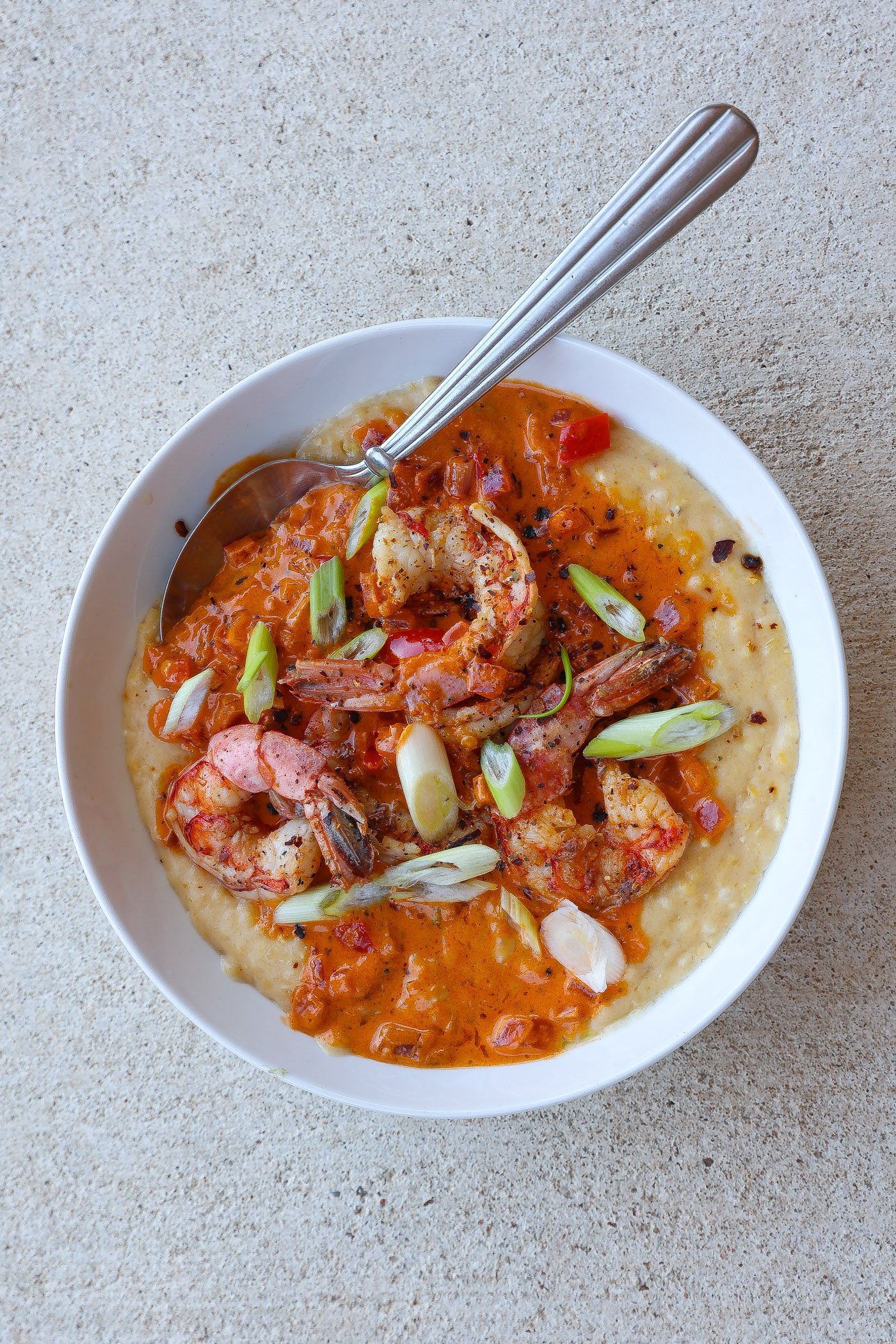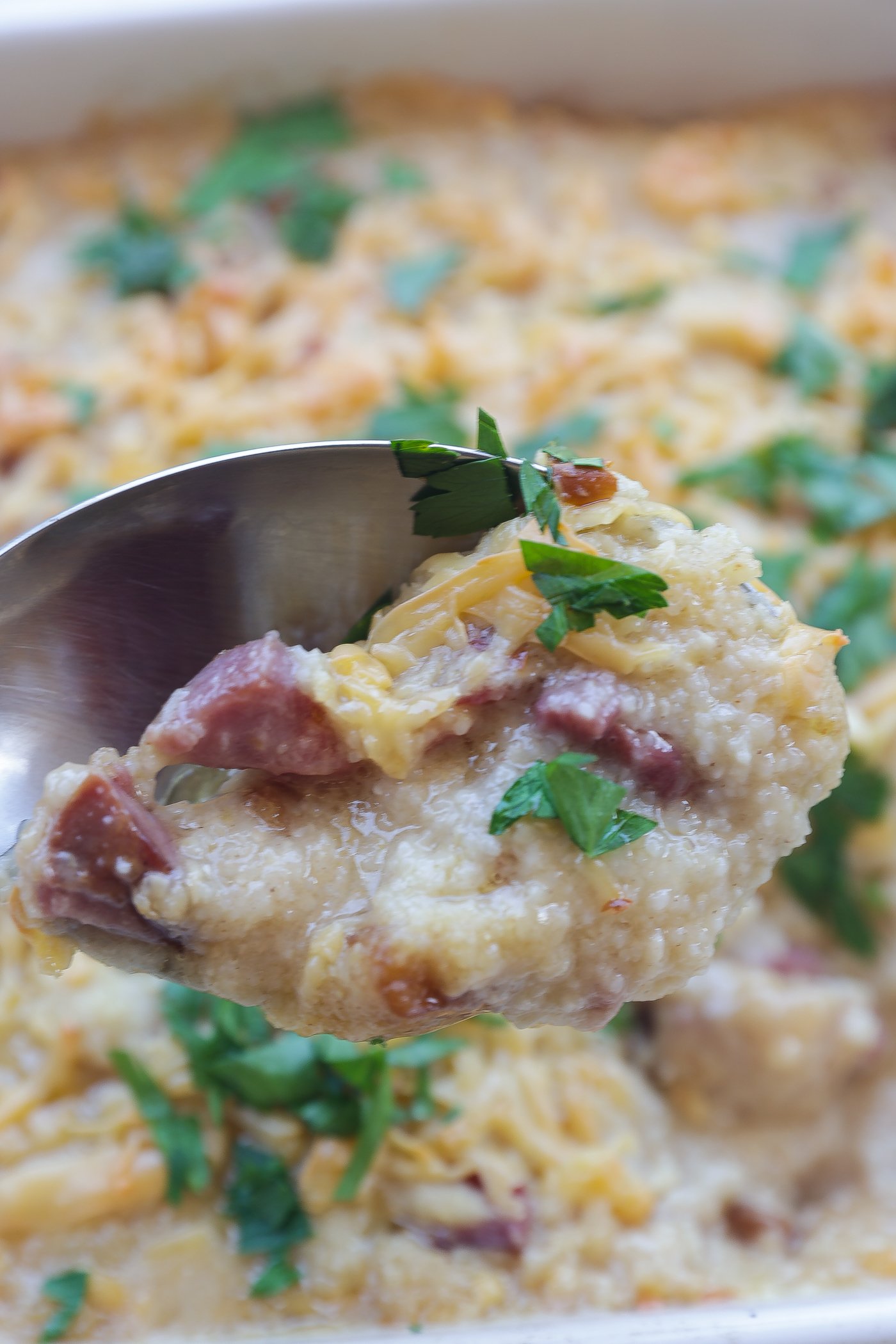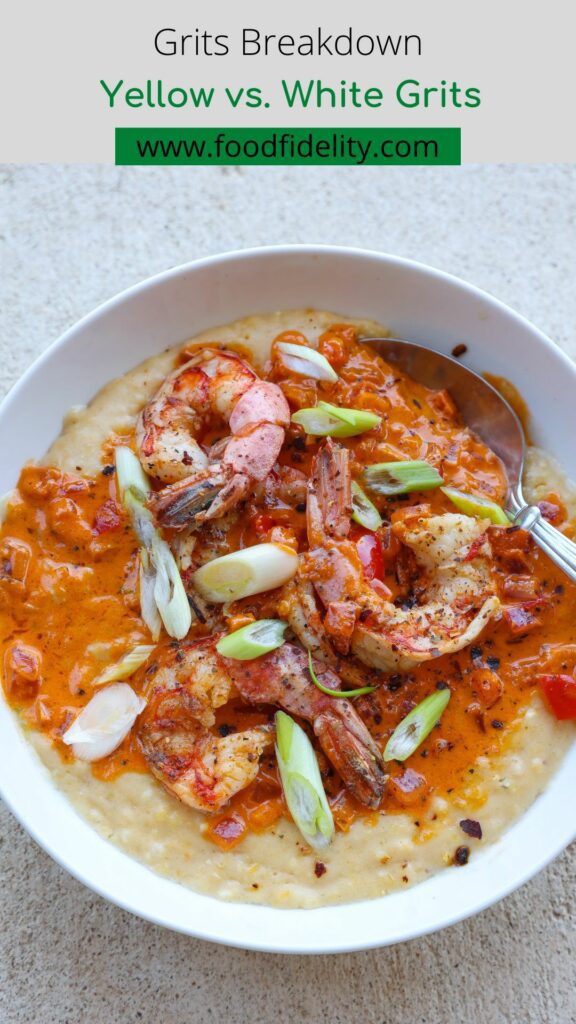Grits are a staple of Southern cuisine, loved for their versatility and comforting texture. When it comes to cooking grits, the preparation methods play a crucial role in understanding the differences between yellow and white grits. But when it comes to choosing between yellow grits and white grits, many people wonder—what’s the difference? While both are made from ground corn, the distinctions in flavor, texture, and regional preferences can help guide you to the best choice for your dish. In this article, we’ll break down the key differences between yellow and white grits and how to choose the right type for your next meal.
What are Grits?
Grits are a type of porridge made from ground corn, and they hold a cherished place in Southern cuisine. This versatile dish has been a staple in American food culture for centuries, often served as a comforting side or a hearty base for various recipes. Grits can be made from different types of corn, including yellow corn, white corn, and dent corn. The choice of corn affects not only the flavor but also the texture and nutritional content of the grits. Whether you’re enjoying a bowl of creamy white grits or the slightly sweeter yellow grits, this dish is a testament to the enduring appeal of corn in American culinary traditions.

Types of Grits
There are several types of grits, each with its own unique characteristics and culinary uses. Here’s a closer look at the most common varieties:
- Stone Ground Grits: Made from whole corn kernels that are ground between two stones, stone ground grits are the most traditional and nutritious type. They have a coarse texture and a rich, robust corn flavor, making them a favorite for those who appreciate a hearty, rustic dish.
- Quick Grits: These grits are ground finer than stone ground grits, allowing them to cook faster. Quick grits have a milder flavor and a smoother texture, making them a convenient option for busy mornings or quick meals.
- Instant Grits: Pre-cooked and dehydrated, instant grits are the fastest to prepare. They have a very fine texture and are perfect for those who need a quick, no-fuss meal without sacrificing the comforting taste of grits.
- White Grits: Made from white corn, these grits have a milder flavor and a smoother texture. They are often used in traditional Southern recipes, providing a neutral base that pairs well with a variety of toppings and ingredients.
- Yellow Grits: Made from yellow corn, these grits have a slightly sweeter and nuttier flavor compared to white grits. They are ideal for recipes where a stronger corn flavor is desired, adding a touch of natural sweetness to the dish.
Each type of grits offers its own unique taste and texture, allowing you to choose the perfect variety for your culinary needs. Whether you prefer the traditional, hearty texture of stone ground grits or the quick convenience of instant grits, there’s a type of grits to suit every palate and occasion.
The Type of Corn
The most fundamental difference between yellow and white grits lies in the type of corn they are made from:
- Yellow Grits are made from yellow corn, which contains more carotenoids, the natural pigments that give the corn its golden color.
- White Grits come from white corn, which lacks those carotenoids, giving it a lighter, more neutral appearance.
White corn has a naturally higher sugar content compared to yellow corn, which affects the flavor profile of the grits.
This difference in corn type directly impacts not only the color but also the taste and texture of the grits.
Flavor Profiles
When it comes to flavor, yellow and white grits have subtle but noticeable differences:
- Yellow Grits: Known for having a slightly sweeter, richer flavor, yellow grits carry a bit more of that corn essence. The carotenoids in yellow corn give the grits a hint of natural sweetness, making them stand out a bit more in flavor. Adding more salt to the water when cooking yellow grits can enhance their flavor, especially with their natural sweetness.
- White Grits: White grits have a more neutral, mild flavor. They’re often considered a blank canvas, absorbing the flavors of whatever you pair them with, from butter and cheese to shrimp or gravy.
This makes yellow grits a great option when you want the corn flavor to shine, while white grits are ideal when you’re looking to enhance other flavors in the dish.
Texture
While both types of grits are ground corn, texture can vary depending on how finely the grits are ground:
- Yellow Grits are often considered to be slightly coarser than white grits. This can make them feel heartier or more textured in the final dish, though this can vary depending on the brand or grind you choose.
- White Grits, on the other hand, tend to have a smoother, creamier texture, which many people enjoy in classic Southern dishes like shrimp and grits.
To achieve this creamy consistency, it is important to reduce heat after boiling the liquid, allowing the grits to simmer until they are thoroughly cooked.
That said, both yellow and white grits can be found in coarse or fine varieties, so you can choose the grind that best suits your recipe.
Regional Preferences
In the United States, regional preferences often determine which type of grits people eat:
- White Grits are more commonly found in the Southeastern states like South Carolina, Georgia, and Alabama. They are a staple of traditional Southern cooking and are often the base for dishes like Shrimp and Grits or served as a breakfast side with butter.
- Yellow Grits are more popular in Louisiana and parts of the Midwest. They’re also used in dishes like Polenta, which is made from yellow corn grits in Italian cuisine.
Many regions have their own traditions for cooking and serving grits, and the type used often comes down to what’s most common in that area.
Cooking and Serving
Both yellow and white grits are cooked in the same way and can be used interchangeably in recipes. They’re typically boiled in water or broth until they reach a creamy consistency, then seasoned with butter, salt, or cheese. Some cooks like to add milk or cream for extra richness. Corn syrup can be used in recipes like pecan grits pie to enhance sweetness and texture.
White Grits are commonly paired with savory toppings like shrimp, sausage, or bacon in Southern dishes, while Yellow Grits are often seen in more rustic or heartier dishes where the corn flavor is desired. Both can be used in breakfast dishes, casseroles, or even as a base for baked dishes. Tasso ham can be sautéed and added to dishes like Southern Shrimp and Grits to enhance the flavor.

Which Should You Choose?
When deciding between yellow and white grits, it ultimately comes down to personal preference and the dish you’re making:
- For bold, corn-forward flavor: Choose yellow grits. Their natural sweetness and rich flavor make them perfect for dishes where you want the corn to stand out.
- For a neutral, adaptable base: Choose white grits. They’re ideal for dishes where you want the flavors of other ingredients—like gravy, cheese, or seafood—to shine.
Both types of grits are versatile, delicious, and a comforting addition to any meal. Whether you’re a fan of creamy white grits or hearty yellow grits, you can’t go wrong with this Southern classic.
Conclusion
While yellow and white grits have subtle differences in flavor, texture, and regional usage, both are excellent options for adding a touch of Southern comfort to your table. Whether you prefer the sweeter, richer taste of yellow grits or the smooth, neutral flavor of white grits, each has its place in your cooking repertoire. Experiment with both types to discover your personal favorite!

